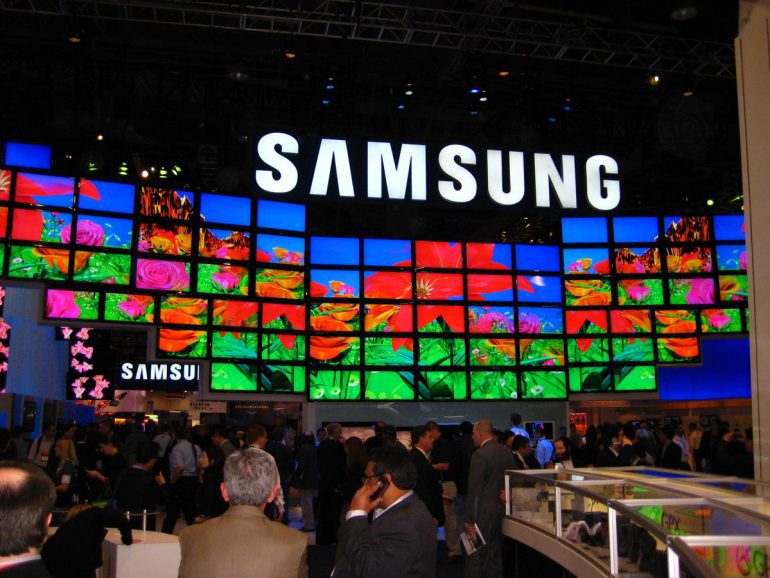- Samsung Electronics anticipates robust demand for AI, projecting a tightening supply of high-end chips.
- First-quarter operating profit sees a staggering over tenfold increase, driven by soaring memory chip revenue amidst the AI boom.
- Samsung aims to bridge the gap with competitors in the supply of high bandwidth memory (HBM) chips, targeting a significant increase in production.
- Analysts view Samsung’s targets as ambitious, with its technological edge poised to benefit both Nvidia and AMD.
- Samsung plans to bolster SSD offerings to meet AI server demand but anticipates tightening supply of high-end memory chips by year-end.
- Despite challenges in the mobile devices segment, Samsung remains a dominant force, shipping 60 million smartphones in the first quarter.
Main AI News:
Samsung Electronics projects robust demand for artificial intelligence, anticipating a tightening supply of select high-end chips. This move aligns with industry trends, as companies capitalize on the resurgence of the global memory chip market.
Following Samsung’s optimistic forecast, the company’s shares surged by 1.8% on Tuesday, buoyed by a staggering over tenfold increase in first-quarter operating profit. Despite this impressive performance, Samsung’s shares have dipped by 0.8% since the start of the year, trailing behind SK Hynix’s remarkable 24% surge. Samsung aims to bridge this gap, particularly in the provision of top-tier chips like high bandwidth memory (HBM), a domain where its competitor SK Hynix has gained ground, particularly in supplying AI giant Nvidia.
“We plan to increase supply of HBM-related chips in 2024 by more than three-fold versus last year,” stated Jaejune Kim, a Samsung vice president overseeing the memory division, during an earnings call.
Samsung has initiated mass production of its latest HBM chips, dubbed 8-layer HBM3E, with an eye on generative AI chipsets. This strategic move aims to leverage the ongoing AI boom, a trend that has notably favored SK Hynix, previously the sole supplier of HBM3 chips to Nvidia. Looking ahead, Samsung intends to commence production of the 12-layer version in the second quarter, with these advanced HBM3E products projected to constitute two-thirds of its HBM output by year-end.
Analysts view Samsung’s targets as ambitious. Jeff Kim, head of research at KB Securities, notes, “Samsung’s 8-layer HBM3E appears to be supplying Nvidia, while the 12-layer may go to AMD and Nvidia.” He underscores Samsung’s technological edge in high-stacking, contrasting with SK Hynix’s prowess in 8-layer production.
Samsung’s pursuit of enhancing the yield of its 12-layer product underscores its commitment to technological advancement and market leadership in the semiconductor arena. The company’s silence on its HBM customers raises speculation, suggesting strategic maneuvers in a highly competitive landscape.
Additionally, Samsung plans to bolster its offerings of high-end solid-state drive (SSD) products to meet the burgeoning demand for AI servers. However, the company anticipates tightening supply of high-end memory chips toward year-end, attributed to a capacity shift towards HBM production, echoing sentiments echoed by SK Hynix.
Riding High on Profit Surge
Samsung’s first-quarter revenue climbed by 13% to 71.9 trillion won ($52.14 billion), driven by a remarkable 96% surge in memory chip revenue, reaching 17.49 trillion won. This surge in revenue, fueled by soaring chip prices amidst the AI boom, propelled the company’s operating profit to 6.6 trillion won, marking a significant jump from 640 billion won a year earlier.
The chip division, historically Samsung’s cash cow business, staged a remarkable turnaround, swinging from a 4.58 trillion won loss to a profit of 1.91 trillion won in the March quarter. This rebound signifies a pivotal moment for Samsung, reclaiming its profitability after a challenging period.
The prices of NAND flash and DRAM chips witnessed substantial increases during the first quarter, further bolstering Samsung’s revenue streams. Despite a slight dip in profitability in the mobile devices segment, Samsung shipped approximately 60 million smartphones during the quarter, reaffirming its dominance in the global market.
Conclusion:
Samsung’s strategic focus on AI-driven technologies and semiconductor innovation underscores its resilience and adaptability in navigating market shifts. The company’s aggressive expansion in the high-end chip market, coupled with its sustained profitability, is poised to reinforce its position as a key player in the evolving landscape of technology and AI-driven industries.

